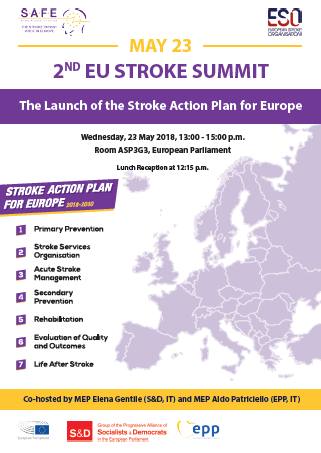
May 11, 2018
Stroke Action Plan for Europe 2018-2030
Basel and Brussels, 11 May 2018 – Just one year after signing a Memorandum of Understanding, the European Stroke Organisation (ESO) and the Stroke Alliance for Europe (SAFE) are proud to present the “The Stroke Action Plan for Europe 2018-2030”, with the aim of significantly improving stroke care and Life after Stroke for the millions of people expected to have strokes over the next 12 years.
ESO and SAFE will present the Stroke Action Plan for Europe to the medical world for the first time in a joint session at ESOC in Gothenburg on Thursday, 17 May. In addition to speakers from ESO and SAFE, the World Health Organisation (WHO) perspective on Joining Forces in Combating Stroke in Europe will be presented. (more…)
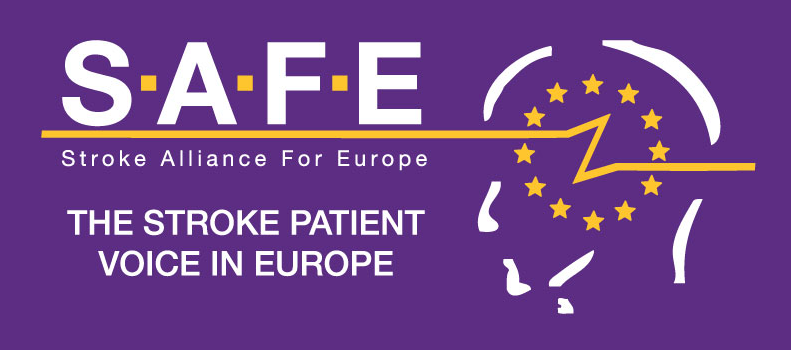
May 8, 2018
The Stroke Alliance for Europe (SAFE) and its members from 30 European countries are committed to raising awareness of stroke
Brussels, 8th May 2018- This May, SAFE and its members have many activities to be proud of. We have managed to successfully complete a joint project with the European Stroke Organisation (ESO), the Stroke Action Plan for Europe 2018-2030.
The project will first be presented to the medical world at this year’s European Stroke Congress in Gothenburg, Sweden on Thursday, 17 May 2018.
After that, the main recommendations in the Stroke Action Plan will be launched to politicians and the public at the European Parliament on 23 May at the 2nd EU Stroke Summit. (more…)
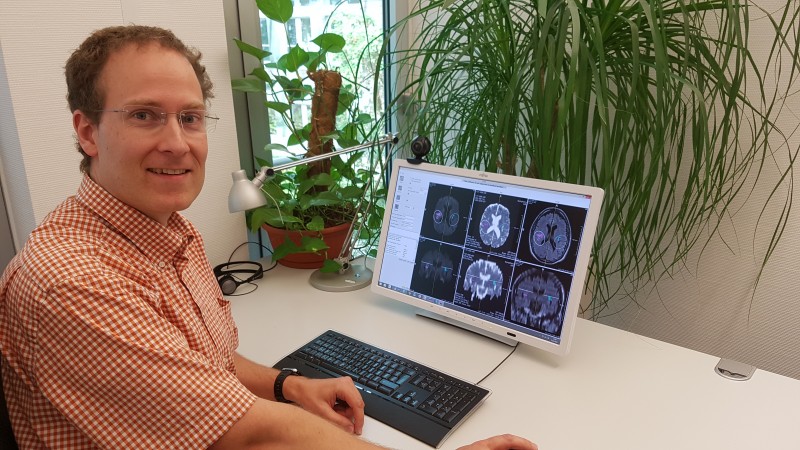
May 7, 2018
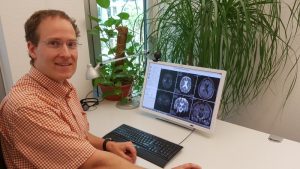
Jan Klein; Photo by Fraunhofer MEVIS
Stroke is a devastating disease leading to death and disability in large numbers of patients with massive social and economic impact. Intravenous thrombolysis with Alteplase is available as an effective and safe treatment of acute stroke if given within 4.5 hours of symptom onset.
However, in about 20% of acute stroke patients the time of symptom onset is unknown e.g. because symptoms are recognized when waking-up from sleep in the morning. This large group of patients is currently excluded from treatment with Alteplase only due to the missing information on the time of symptom onset.
WAKE-UP was a European multicentre investigator-initiated randomized placebo-controlled clinical trial of MRI based thrombolysis in acute stroke patients with unknown time of symptom onset.
In preparatory work, the WAKE-UP consortium developed an innovative approach of using brain MRI as surrogate marker of stroke lesion age which may be used to identify stroke patients likely to benefit from thrombolysis.
The final results of this trial will be presented at the press conference within ESOC 2018, in Gothenburg, Sweden, from 11:40 to 11:50 CET on Wednesday, 16 May.
As the revealing of the WAKE UP trial results approaches, SAFE used the opportunity to talk with the two scientists, Jan Klein from the Fraunhofer Institute for Medical Image Computing MEVIS, Bremen, Germany and Bastian Cheng, from School of Medicine and University Hospital Hamburg-Eppendorf to learn more about SONIA – the diagnostic imaging software that was developed during the course of the project. (more…)
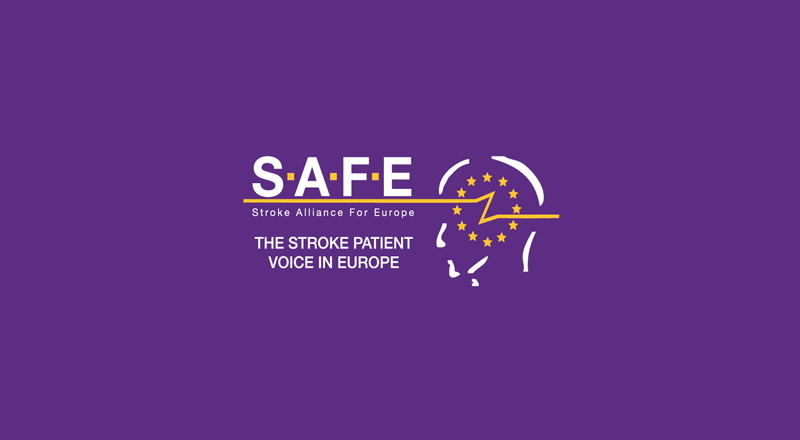
May 3, 2018
First published on ScienceDaily.com
A study led by Massachusetts General Hospital (MGH) investigators may lead to a significant expansion in the number of stroke patients who can safely be treated with intravenous tPA (tissue plasminogen activator), the “clot busting” drug that has greatly reduced stroke-related disability and deaths in eligible patients. The report, published online in Annals of Neurology, describes the results of a trial using MR-based imaging technologies to identify patients likely to be within 4.5 hours of stroke onset, even though their initial symptoms had not been witnessed. (more…)

May 3, 2018
First published on ScienceDaily.com
The diagnosis is one that a family never wants to hear: Your father has Alzheimer’s disease. Your mother has stroke-related dementia.
A recently released study, included in a special supplement to the Journal of Gerontology, indicates that dementia’s impact might be compressing a bit. That is, people might be developing dementia later and living with it for a shorter period of time. (more…)









